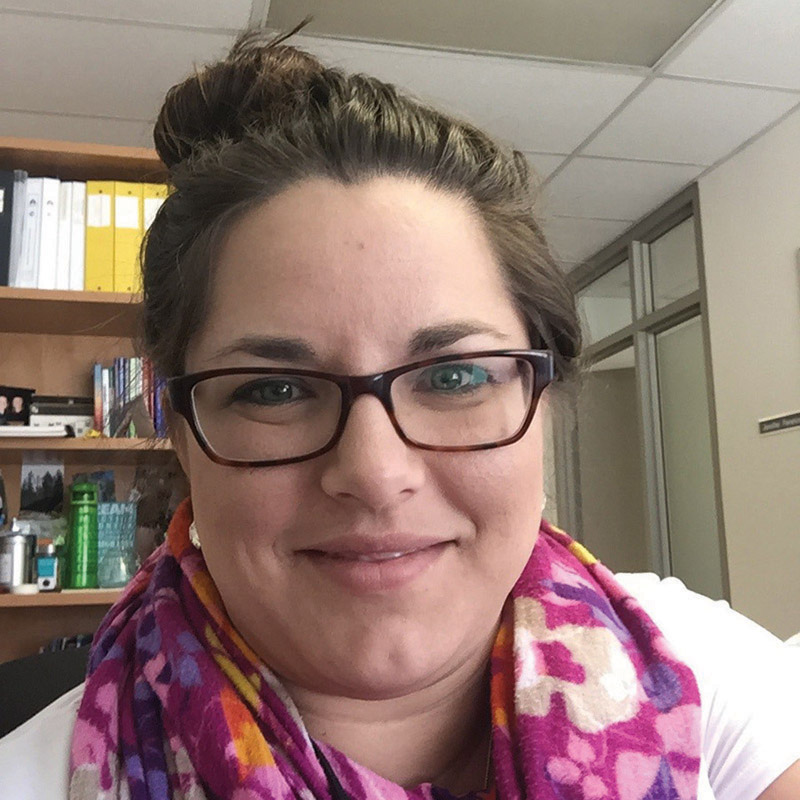As teachers, we know how important it is to build connections with students, but sometimes we fall into a trap of thinking that these connections need to be some big lesson or experience. That’s not the case.
For most students it’s the little things that matter most. It’s as simple as saying good morning every morning, writing thank you cards, learning everyone’s name, waving goodbye to the buses (even if they don’t wave back), showing up to the band concert, school play, badminton game, lunch hour clubs, just to say hi and check it out.
Students always notice when you show up. They see you. Find that one thing that interests your students and ask them about it. You would be surprised how much students will share when they are passionate about it. This year, the gerbera daisies on my desk sparked a conversation about plants, which led to reptiles, and now I know more about snakes and lizards then I ever did before.
Sometimes the way you organize or decorate your classroom has the potential to build connections with students. Last year I put a very large map of the world on the wall, and this became a gathering place for students. They discussed places they had been, and places they would like to go. I have posters around the room with quotes and pictures of famous people — I made a conscious decision to include quotes and pictures that represent diversity and inclusivity. It was important to me that all types of students be represented.
I found that keeping my door open at lunch or during breaks allows students to visit, chat, or simply provides them a quiet place to just be. Being available to chat and giving your students your time and your undivided attention goes a long way in building a lasting connection. Whatever email, marking or planning we try to cram into our recesses or breaks, while important, will not be as meaningful as the five-minute conversation we have with a student who comes to visit between classes. That might be the only five minutes that student gets to connect with an adult in the building that week.
"... keeping my door open at lunch or during breaks allows students to visit, chat, or provides ... a quiet place to just be."
Several years ago, during a professional learning session on assessment, I heard Sandra Herbst say, “give students an honorable task.” I took her message to heart, and when I recognize a talent or passion in my students, whether it be artistic, athletic or academic, I try to acknowledge their talent by inviting them to participate in an honorable task — asking the athlete to help coach the elementary basketball team, or the artist to design the program cover for awards night.
Knowing my students well enough to see these talents helps build a connection, but asking them to participate and use their talents can have a significant impact on how connected they feel to their school, their classmates or their community. It makes them feel seen, heard and appreciated. They might struggle in other areas, so focusing on a strength has the potential to build confidence, independence and ability.
Building connections with some students can be difficult; it requires patience and perseverance. All the usual techniques of building connections and community in the classroom might not work.
Early in my career, I struggled to form a connection with a particular student in my Grade 7 social class. I said good morning to this student every day, starting on the very first day of school, but it took until February before they acknowledged my presence and responded to my greeting. I was committed to making sure that this particular student felt welcome in the building and my classroom. It was important to me that every student felt connected, and I wasn’t about to give up.
Now, as a more experienced teacher, I have realized that just as much as our students need and benefit from a sense of community in the classroom, our staff — certificated, classified and contract services — also need and benefit from feeling like a community. So, these days, I am also focused on building community with the adults in my building: thank you notes, random snacks in mailboxes, wellness events, after school chats, hat days and donations to the food bank, all in service of my school family, because that is what we are — a family, a community. ❚
Opinions expressed on this page represent the views of the individual writers and do not necessarily reflect the position of the Alberta Teachers’ Association.

Special to the ATA News
Danielle Nelson is a teacher with 17 years of experience building connections with junior high students. She has also worked as a consultant within Elk Island Public Schools supporting teachers in student-centered learning and innovative teaching practices.


